[center]Basic need of a human being is FOOD[/center]
[center]What all are important in food?[/center][center]OR[/center][center]What are the important components in food?[/center]
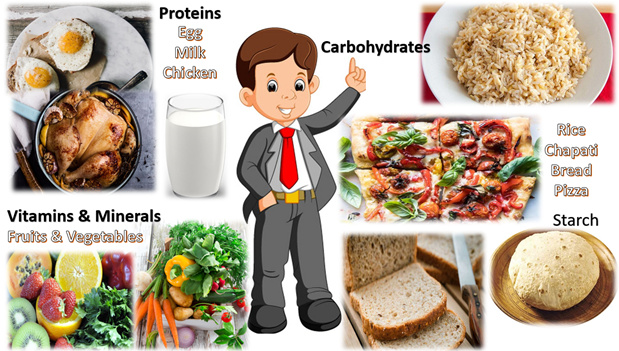
By this picture we get to know the important components of our daily diet or food!
What does these fruit flies require?
How do we come to know, what these fruit flies feed on in the environment?
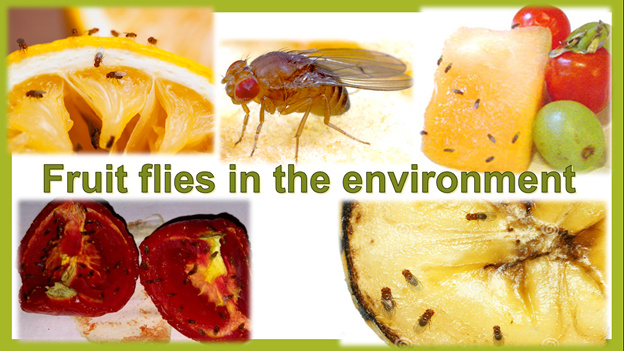
By looking at the above picture, we will get an idea what do these fruit flies require…
The place or the food on which it is sitting on will tell us what these fruit flies really want in their diet or food…
Bananas, tomatoes, different fruits, rotten vegetables are the food that we see above on which these flies sit…These flies are feeding on it.
What are the common components or nutrients in these food items that we see in the picture…???
- Carbohydrates
- Sugar molecules or compounds (glucose, sucrose, fructose).
- Proteins
- Vitamins
- Minerals…
[center]How do we provide such nutrients through the food that we give in the lab as well as how can we culture and maintain them?[/center]
[center]The food nutrients mentioned above were provided in the following manner.[/center]
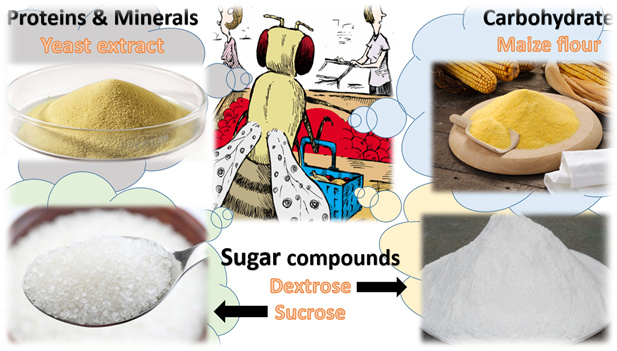
Fruit flies get the nutrients like carbohydrates, sugar compounds for energy, proteins, vitamins and minerals from the food that is shown in the picture above.
We prepare a media having the above components in it
1. MAIZE FLOUR (Carbohydrates).
2. DEXTROSE (simple glucose sugar).
3. SUCROSE (disaccharide).
4. YEAST EXTRACT (protein, minerals, vitamins).
We can’t use a liquid media to culture or maintain the flies for a long time because the flies might fall into the liquid media and can no more fly…
For achieving a semisolid to solid media consistency, we add AGAR
5. AGAR (a solidifying agent).
6. DISTILLED WATER is used for mixing all the components together.
As we are using such media bottles for maintaining flies in it for a long time (at least a month) we need to make sure that there is no contamination of the media…Contamination can be either bacterial or fungal.
So we have an antibacterial and an antifungal agent used in this media…
7. ORTHOPHOSPHORIC ACID (antibacterial).
8. PROPIONIC ACID (antifungal).
The first 5 components are first weighed and then mixed in distilled water in a conical flask and then the media is cooked till the components are homogenized.
[center]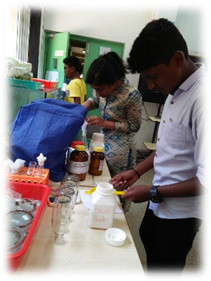 [/center][center]Components weighed, bottles washed and dried before autoclaving.[/center]
[/center][center]Components weighed, bottles washed and dried before autoclaving.[/center]
[center]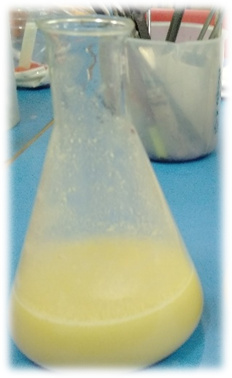 [/center][center]All components mixed well by shaking.[/center]
[/center][center]All components mixed well by shaking.[/center]
Then, the media is autoclaved inside a pressure cooker for about 20 mins (high flame – 1 whistle, low flame – 2 whistles)
The glass bottles are also autoclaved so that there is no contamination introduced from our side…
[center] [/center]
[/center]
Once the media is a bit warm, both the antifungal and antibacterial acids are added. ![]()
[center]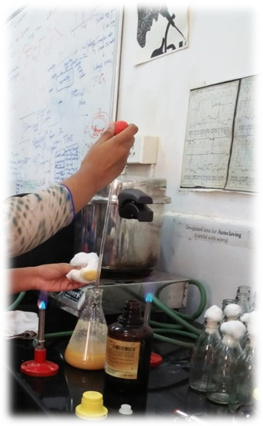 [/center][center]Acids being added in the media in aseptic conditions.[/center]
[/center][center]Acids being added in the media in aseptic conditions.[/center]
| COMPONENTS | QUANTITY (for 250ml media) |
|---|---|
| Maize flour | 20.75g |
| Dextrose | 12.5g |
| Sucrose | 6.25g |
| Yeast extract | 3.75g |
| Agar | 4g |
| Distilled water | add to make up the volume till 250 ml |
| ACIDS | |
| Orthophosphoric acid | 0.17ml |
| Propionic acid | 1ml |
The media is mixed so that the acids are completely spread inside the media.
Once it is completely mixed, the media is poured into glass bottles which are autoclaved.
[center] [/center][center]Pouring the media into autoclaved glass bottles.[/center]
[/center][center]Pouring the media into autoclaved glass bottles.[/center]
As the media is hot and there is condensation in the bottle because of the hot media, we keep the bottles for a day…
[center] [/center][center]Condensation in bottles.[/center]
[/center][center]Condensation in bottles.[/center]
We first let the media to solidify completely and then we keep the bottle inverted or upside down so that the water is out of the bottle through the cotton plug.
[center]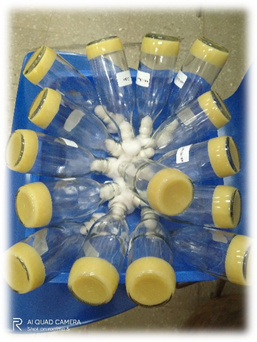 [/center][center]Media bottles ready and kept upside down for drying.[/center]
[/center][center]Media bottles ready and kept upside down for drying.[/center]
All about the standard media that we prepare for maintaining and culturing flies in our labs.
This is how a standard media looks once the flies are transferred into the bottle.
[center]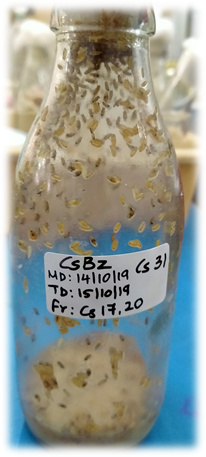 [/center][center]Larvae, Pupae & Adult flies in the standard cornmeal media bottle.[/center]
[/center][center]Larvae, Pupae & Adult flies in the standard cornmeal media bottle.[/center]
Back to home page ![]()